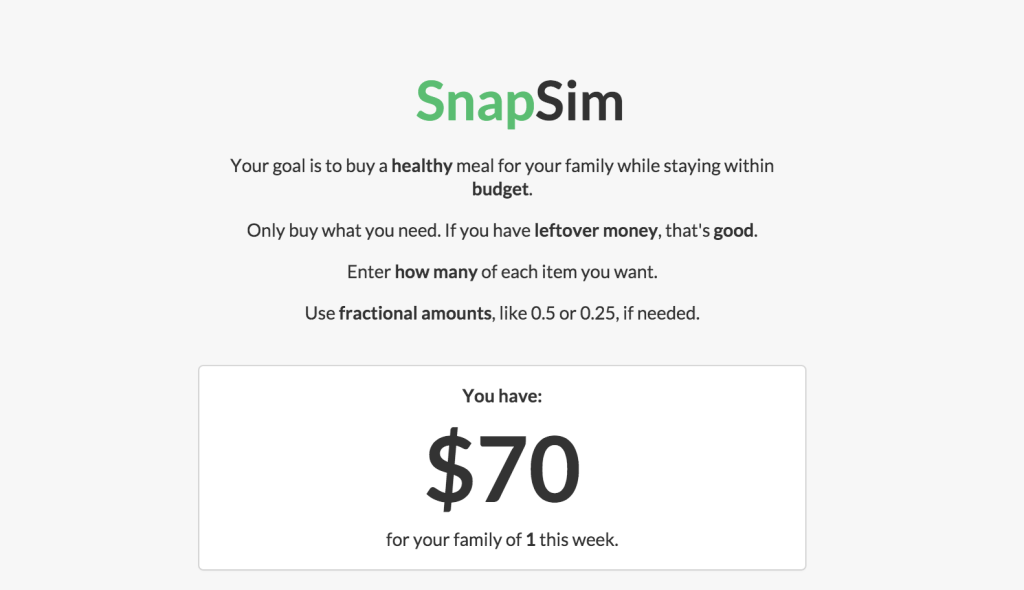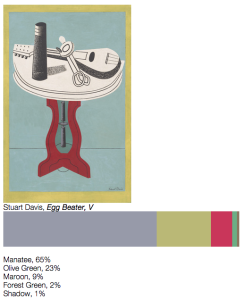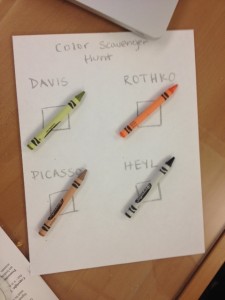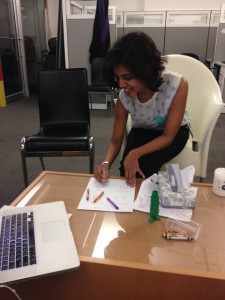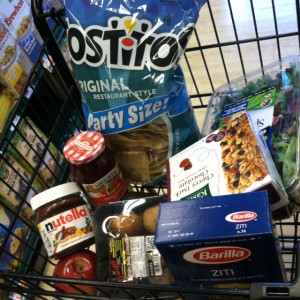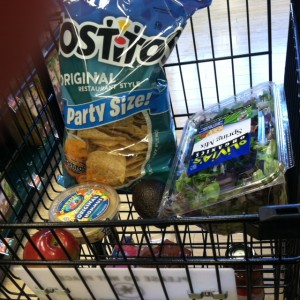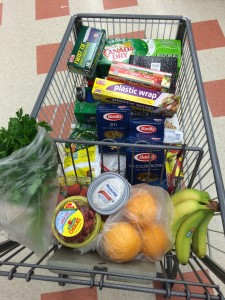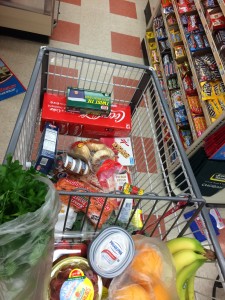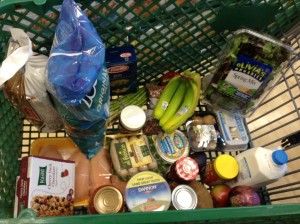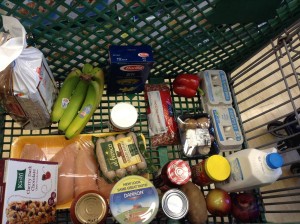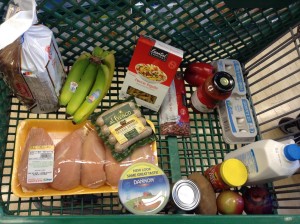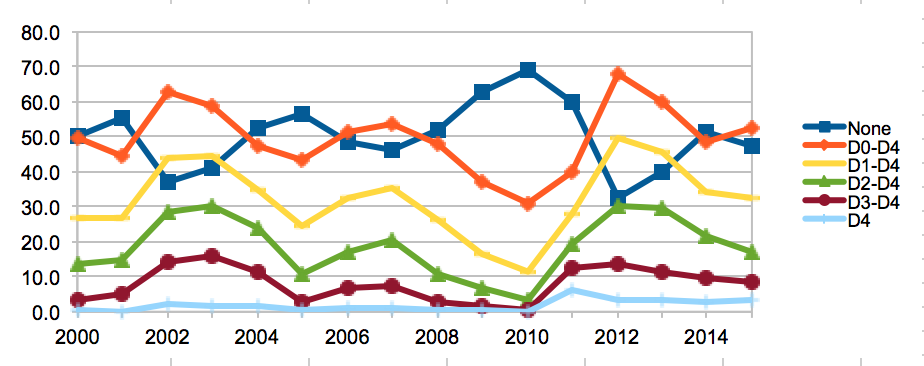In playtesting our game, we asked participants to budget their food expenditures before and after to see how their perspectives changed, as specified in our original design. Additionally, we asked the playtesters two questions to tie the game back to the real world:
- What are some challenges that people facing food insecurity have to deal with?
- What can we do — whether it’s as individuals or as a broader community/society/nation — to help with those challenges?
During this process, we saw the game was successful in getting people to think and talk about food security as an issue but the gameplay needs to be fleshed out significantly to better achieve its goals (i.e. building empathy). The overall design worked — among three playtesters, two under-budgeted on food by only using the SNAP money and ended up allocating more money to food at the end of the game. The third playtester didn’t change her budget (though she was already allocating more than the SNAP amount) because she thought it was livable. “I’ll just have to do it in real life,” she said, perhaps hinting that the game wasn’t effective in representing the challenge of subsisting on so little money per day.
The random events were pretty effective in illustrating some of the challenges faced by people on SNAP (though the “positive” events didn’t really do much). One playtester got injured and couldn’t work for a week, losing 1/4 of her income; as a result, she ended up losing too much money and couldn’t pay the amount originally allocated for food. Housing turned out to be far too expensive (since the dataset used was based on average rent prices, not the rents that SNAP participants are probably paying), so participants chose either to live in public housing/a homeless shelter or crammed their entire family into a one bedroom unit.
The responses to the post questions showed an increase in awareness (but not necessarily empathy — we might need to come up with a better metric to measure this) of the conditions surrounding food insecurity. One playtester noted that living on such a tight budget “would require a lot of planning, and if you’re on food stamps, you might not have the time to do that.” Another acknowledged the volatility of poverty: “The biggest challenge is emergencies — if someone gets injured or they don’t have a good health plan, they might have to take out a loan.” In terms of potential action items, playtesters proposed producing suggestions for food purchases with nutritional value (ironic, given that this is the methodology for actually figuring out SNAP benefits), organizing communal trips to the grocery store, and holding community meetings around the issue.
From an actual gameplay perspective, there needs to be more player agency and choice. One playtester said the game is “like one of those BuzzFeed quizzes — it’s like this, this, or this, and then here you go, the end — with the little description.” One way to solve this would be to add more detailed character biographies to increase the sense of role-playing, immersing players deeper in the experience and raising the stakes on an empathetic level. Another approach would be to change the granularity of the game — rather than running the game week by week, we could have it operate per day, with more decisions (meals, whether to go to the grocery store, etc).
Another issue was that — even though the game was designed as a multiplayer experience — there was little to no interaction between the players. Certainly, having multiple people made the conversations more fruitful, but actually having gameplay interactions between them would have probably made it more interesting. Finally, to address the issue raised by our second post-question, we could introduce other characters/events to the game perhaps to illustrate ways in which we can help the food insecure (e.g. maybe you could go to a food pantry/bank as a “lifeline”). This would give playtesters tangible action items to take away from the game.
